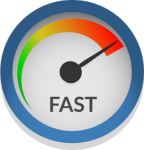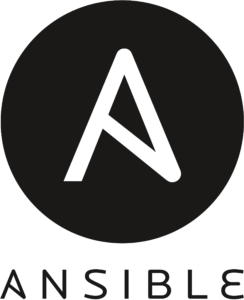DevOps Certification Training
- 187k Enrolled Learners
- Weekend/Weekday
- Live Class
Wouldn’t it be great if you are able to program your infrastructure just like you do with your software? Of course, it would be great. This is the core idea of the term called Infrastructure as Code (IaC). IaC is the foundation on which the entire DevOps is built. So in this blog, I am going to discuss IaC in detail. The topics that we are going to discuss are as follows –
So let us begin our discussion. Firstly, let us try to know how infrastructure managed traditionally.
Historically, managing IT infrastructure was a manual process. People would physically put servers in place and configure them. Applications would be deployed only after the machines were configured to the correct settings required by the OS and applications. Unsurprisingly, this manual process would often result in several problems such as follows –
Infrastructure as code (IaC) is the process of managing and provisioning computer data centers through machine-readable definition files, rather than physical hardware configuration or interactive configuration tools. The IT infrastructure managed by this comprises both physical equipments such as bare-metal servers as well as virtual machines and associated configuration resources.
 How IaC Works?
How IaC Works?IaC tools can vary as far as the specifics of how they work, but we can generally divide them into two main types: the ones that follow the imperative approach, and the ones who follow the declarative approach. If you think the categories above have something to do with programming language paradigms, then you are absolutely correct.
 The first significant benefit IaC provides is speed. With Infrastructure as code, you can quickly set up your complete infrastructure by running a script. You can do that for every environment, from development to production, passing through staging, QA, and more.
The first significant benefit IaC provides is speed. With Infrastructure as code, you can quickly set up your complete infrastructure by running a script. You can do that for every environment, from development to production, passing through staging, QA, and more.
 Manual processes sometimes result in mistakes. Manual infrastructure management will result in discrepancies, no matter how hard you try. IaC solves that problem by having the config files themselves be the single source of truth. That way, you guarantee the same configurations will be deployed over and over, without discrepancies.
Manual processes sometimes result in mistakes. Manual infrastructure management will result in discrepancies, no matter how hard you try. IaC solves that problem by having the config files themselves be the single source of truth. That way, you guarantee the same configurations will be deployed over and over, without discrepancies.
 This one is quick and easy. Since you can version IaC configuration files like any source code file, you have full traceability of the changes each configuration suffered. No more guessing games about who did what and when.
This one is quick and easy. Since you can version IaC configuration files like any source code file, you have full traceability of the changes each configuration suffered. No more guessing games about who did what and when.

IaC can make the entire software development lifecycle more efficient.By employing infrastructure as code, you can deploy your infrastructure architectures in many stages. That makes the whole software development life cycle more efficient, raising the team’s productivity to new levels.
 One of the main benefits of IaC is, without a doubt, lowering the costs of infrastructure management. By employing cloud computing along with IaC, you dramatically reduce your costs. That’s because you won’t have to spend money on hardware, hire people to operate it, and build or rent physical space to store it.
One of the main benefits of IaC is, without a doubt, lowering the costs of infrastructure management. By employing cloud computing along with IaC, you dramatically reduce your costs. That’s because you won’t have to spend money on hardware, hire people to operate it, and build or rent physical space to store it.

CloudFormation permits users to model their infrastructure within a JSON or YAML template file. The service also adds automation features to help you with the deployment of resources in a repeatable and manageable way, and you only pay for the resources that you use. With the template configured to your application specifications, CloudFormation will take care of the rest of the tasks for you.
The use of plaintext is very handy. Both YAML or JSON are supported, and it is easy to establish a secure infrastructure model at any complexity level from the many templates available from CloudFormation.

Using this tool, users are able to provision infrastructure and handle dependencies in one seamless cycle through Azure Resource Manager templates (ARM templates). The resources your template uses are declaratively described within JSON and you can also declare multiple Azure resources in one ARM template to establish whole project environments.
Since ARM templates are idempotent, too, you can reuse the same template an infinite number of times and always get the same results. Use a VSTS dashboard to visually monitor all your builds and releases, and get a quick overview of the overall health of your environments and the quality of your templates. The Resource Manager also supports the grouping of server instances along with the unified management of groups.

This tool bases its execution on config files such as YAML and templates (JINJA2 or PYTHON) all within the Google Cloud Platform. It also allows you to define your resources and deploy them synchronically. You get access to both Beta and Alpha features and you can fully script all deployments with autoscaling and load balancing capabilities.
Google CDM also supports previews; which means rather than committing changes directly, you can sneak an advanced overview of the impact deployments and changes will have. The feature avoids human errors and strengthens and stabilizes your infrastructure as a whole.

Terraform automation has various shapes and is orchestrated in varying degrees with the focus on the core plan/apply cycle. Some teams run Terraform locally but they use wrapper scripts to set up a consistent working directory for Terraform to run in. Other development teams may also run Terraform entirely within an alternate orchestration tool such as Jenkins. It is by far the most adaptable tool on this list but subsequently potentially intimidating, to begin with at least.
Similarly to Google CDM, Terraform also supports change and provisioning previews, plus it has a capable set of features for replicating deployments and individual server instances. Terraform then also takes it a step further with its version control and remote states which provide a centralized source of truth for remote teams working in collaboration.

Chef is a quite popular IaC tool among CI/CD practitioners. It uses Ruby-based DSL and this is certainly a huge plus. It has “cookbook” versioning from the beginning and allows you to maintain a consistent configuration. This is possible even when the infrastructure needs to keep up with the rapid growth of the app it hosts.
Chef gives recipes and cookbooks at the heart of its configuration. These are self-styled appellations for templates and collections of templates that you can use out of the box. Normally one cookbook should relate to a single task, but it can deliver a number of different server configurations based on the resources involved. Since it supports cloud provisioning APIs, Chef also works really well with other IaC tools including Terraform as well as multiple other cloud environments.

Ansible is a tool designed with the perspective of automation from the start. This tool focuses on providing “radically simple” configuration language as well as being able to manage cloud instances immediately with no modifications. It is also useful for performing arbitrary IT orchestration such as zero downtime rolling updates, hotfixes, and so on as opposed to being configuration management specific. Rather than managing systems as individual units, you just describe how components and the system in general interact with each other and Ansible will handle the rest.
Ansible is also one of the more flexible IaC tools on the market right now. You are not limited to the features it provides. Rather you can instead develop your own modules and routines to meet specific needs. It even has an attractive GUI for setup and monitoring.
Puppet

Puppet takes a more holistic approach to IaC setup and automation. This tool runs the data centers for several significant companies like Reddit, Dell, and Google and runs on all OS systems. It also has one of the most advanced interfaces on this list. This tool uses Ruby-based DSL as the primary language for defining the desired end state of the infrastructure.
Puppet will then figure out the best way to achieve that end state for you. It also monitors the infrastructure for any changes that deviate away from the defined end state. It automatically corrects those changes. This is a tool developed specifically for system administrators and credit to the considerable enterprise and community support provided.
So now we have come to the end of this blog on Infrastructure as Code. We have covered most of the things that are essential to know about this topic.
Now that you have understood Infrastructure as Code, check out the DevOps training by Edureka, a trusted online learning company with a network of more than 250,000 satisfied learners spread across the globe. The Edureka DevOps Certification Training course helps learners to understand what is DevOps and gain expertise in various DevOps processes and tools such as Puppet, Jenkins, Nagios, Ansible, Chef, Saltstack and GIT for automating multiple steps in SDLC.
Got a question for us? Please mention it in the comments section and we will get back to you.
 Thank you for registering Join Edureka Meetup community for 100+ Free Webinars each month JOIN MEETUP GROUP
Thank you for registering Join Edureka Meetup community for 100+ Free Webinars each month JOIN MEETUP GROUPedureka.co